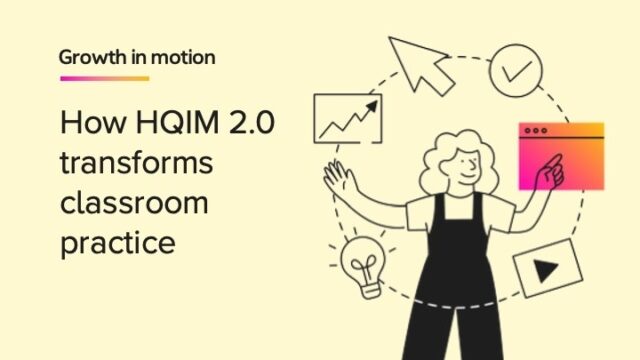
When you first learn a new skill or idea, it helps to have support. For instance, you likely didn’t hop on a two-wheel bike your first time riding—instead, you use training wheels. Such mechanisms make developing skills easier and less intimidating. In fact, you can find support in math class in the form of scaffolded learning. The name is an architectural metaphor referring to structures that hold up a building while it is under construction. It’s not until the building is stable and able to stand on its own that workers remove the scaffold.
Metaphors aside, scaffolded learning provides a framework from which students can learn math. And the practice isn’t just for struggling students either—even students performing on or above grade level can benefit from it. So what is scaffolded learning, and how do you implement it into your lesson plans? Here’s a look at the framework:
Understanding the Scaffold
Scaffolding in math learning comprises many techniques that allow you to provide extra support to your students. Ideally, it will help them bridge learning gaps and achieve understanding they would not be able to on their own.
There is no hard and fast rule that defines what scaffolding looks like. Instead, you can pick and choose techniques to devise your own strategy. So long as you’re guiding students toward better math reasoning and skills, you’re on the right track.

Examples of Scaffolding in Math
Looking for a more defined answer? Examining various strategies may help you understand the concept and plan your own scaffolding math instruction ideas. There are two forms of scaffolding: hard and soft. The former refers to using techniques that directly impact student learning and requires planning, such as games you use or the way you teach a lesson. When using a soft scaffolding strategy, take an indirect approach. For instance, asking targeted questions counts as a soft approach. Here’s a look at various ways you can implement scaffolded learning in your classroom:
Ask questions: Asking questions isn’t only a scaffolding technique, you probably also do it during math talk. Good questions get students to analyze concepts you presented and think about how they come to an answer. Your questions can fall into six categories, as outlined by the Revised Bloom’s Taxonomy: remember, understand, apply, analyze, evaluate and create. Each category does something different, so the goals of your questions change based on the section under which they fall.
For example, “Can you think of another way to write this equation?” is a create question. Each question should guide students toward deeper understanding of the topic.
Use reading strategies: When reading texts in English class, students are often asked to perform tasks or answer questions that help them understand the content and gain awareness of the story as they read. You can do the same thing in math to provide a scaffold.
Reading strategies used in math can be categorized into three different approaches—try, connect, and wonder – each of which you can access through questions. “What would you do if the numbers were smaller?” is an example of a wonder question. It gets students to engage in a hypothetical scenario where they can think about numbers in a new way.
Bolster collaboration: Students can provide scaffolding for each other if you offer tools and strategies. For example, have students work on math problems in pairs, but with only one pencil. That way, students have to work together and take turns. Or, have groups draw pictures that display their understanding of a math concept.
Scaffolded learning helps students achieve greater gains in math class than they would otherwise. Of course, to get the results, you should employ appropriate and effective strategies. Read about differentiated math instruction on Shaped for more ideas to implement in the classroom.
***
Looking to unlock mathematical learning in the students who need it most? Explore Math 180, our revolutionary approach to math intervention for students in Grades 5–12.
Get our free guide to differentiated instruction.
Get our FREE guide "Optimizing the Math Classroom: 6 Best Practices."














